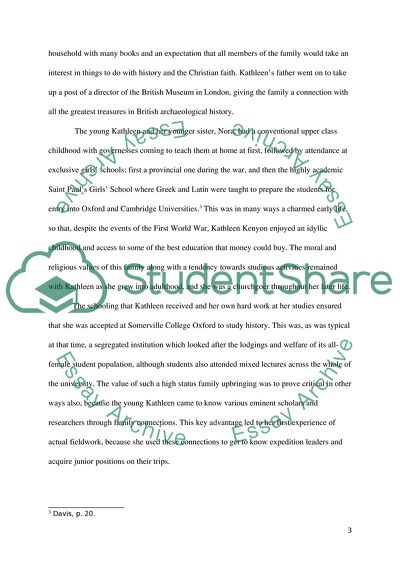Cite this document
(A Biography of Kathleen Kenyon, the Renowned Biblical Archaeologist Essay Example | Topics and Well Written Essays - 2250 words, n.d.)
A Biography of Kathleen Kenyon, the Renowned Biblical Archaeologist Essay Example | Topics and Well Written Essays - 2250 words. https://studentshare.org/biographies/1774806-a-biography-on-kathleen-kenyon-a-renowned-biblical-archaeologist
A Biography of Kathleen Kenyon, the Renowned Biblical Archaeologist Essay Example | Topics and Well Written Essays - 2250 words. https://studentshare.org/biographies/1774806-a-biography-on-kathleen-kenyon-a-renowned-biblical-archaeologist
(A Biography of Kathleen Kenyon, the Renowned Biblical Archaeologist Essay Example | Topics and Well Written Essays - 2250 Words)
A Biography of Kathleen Kenyon, the Renowned Biblical Archaeologist Essay Example | Topics and Well Written Essays - 2250 Words. https://studentshare.org/biographies/1774806-a-biography-on-kathleen-kenyon-a-renowned-biblical-archaeologist.
A Biography of Kathleen Kenyon, the Renowned Biblical Archaeologist Essay Example | Topics and Well Written Essays - 2250 Words. https://studentshare.org/biographies/1774806-a-biography-on-kathleen-kenyon-a-renowned-biblical-archaeologist.
“A Biography of Kathleen Kenyon, the Renowned Biblical Archaeologist Essay Example | Topics and Well Written Essays - 2250 Words”. https://studentshare.org/biographies/1774806-a-biography-on-kathleen-kenyon-a-renowned-biblical-archaeologist.


